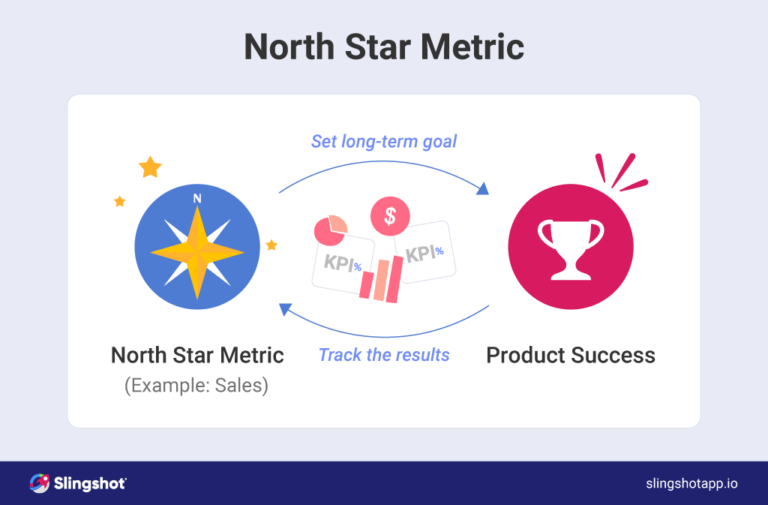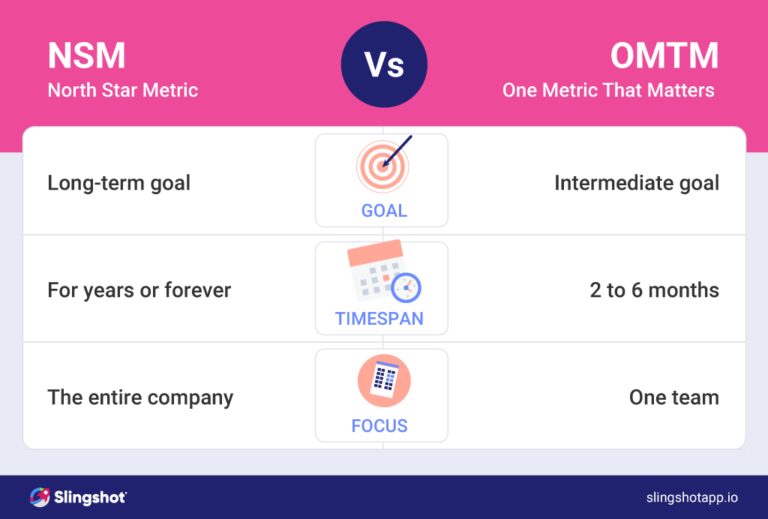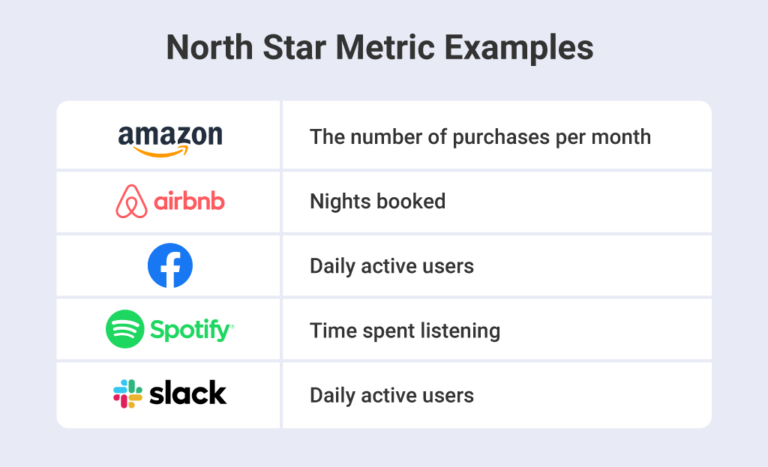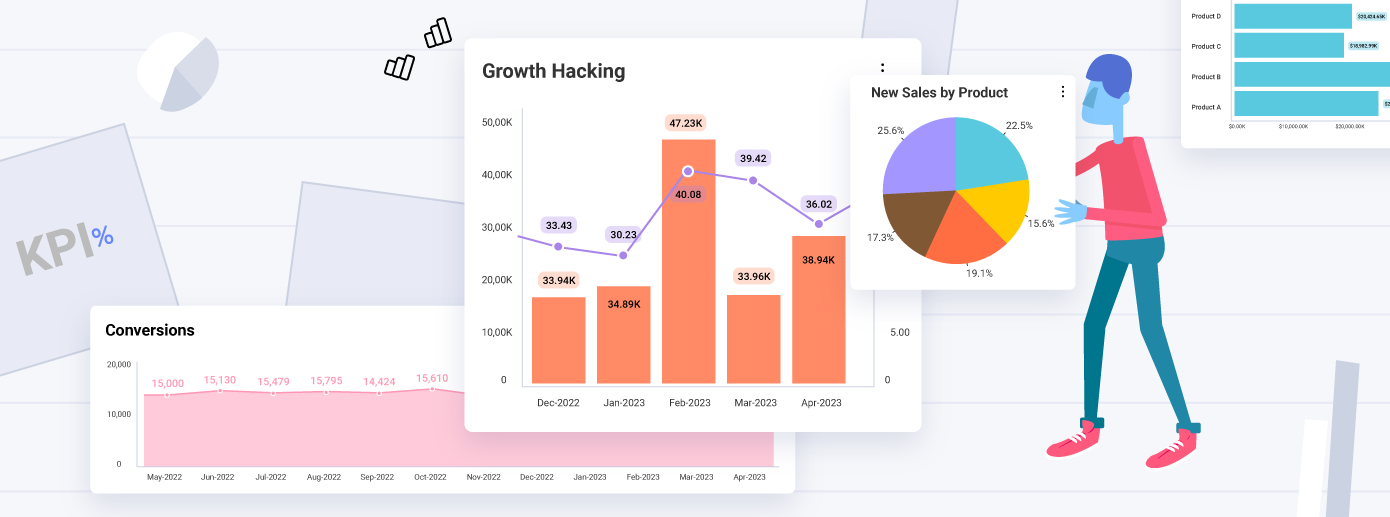

Defining Your North Star Metric: A Highway to Growth
It's not about intuition anymore, when it comes to business. The role intuition plays is still there, but is massively overridden by data - the only thing that accurately points the way to success.
Executive Summary:
It's not about intuition anymore, when it comes to business. The role intuition plays is still there, but is massively overridden by data - the only thing that accurately points the way to success.
If you’re still wondering what drives business results forward like nothing else – it’s data. Businesses and teams have long ago learned the benefits of choosing insight, not impulse, to craft the way forward for growth hacking their product development, and retaining customers long-term with a minimal budget.
But in every such strategy, the North Star Metric is easily the most significant and powerful metric when companies seek growth and achieve a smart strategy. Thing is, choosing what metric you can “crown” as your most important one, could turn out to be tricky.
So how can you find your North Star Metric and depend on it with certainty that it’s going to bring numerous benefits to your product strategy?
What is North Star Metric
А north star metric is the identified key metric of ultimate success that a product or service company is tracking. For every product-growth-oriented company, a different north star metric can be chosen depending on what they consider a guiding compass for their product. Every company should have a defined north star metric, to invest energy, budget, and brainpower into. It also captures the core value the product delivers to customers.
Purposes of the north star metric include:
- Providing clarity and organizational alignment within the product development and marketing teams
- Clears up the product’s impact, progress, and popularity resulting in an adjustment of strategy
- Holding the product responsible for a desired outcome
Beyond providing product companies with a good overview of whether their goals are reached and if the company growth and customer retention are happening at the rate it’s supposed to. It represents the measure of success you have in solving customer problems and the revenue that the business is getting thanks to it.

Benefits of a North Star Metric
For product-growth companies, the north star metric is crucial to determine how the business is doing. More important than that though – measuring it helps to guide future decisions by making them data-driven. Meaning – eliminates the risk of acting on intuition and impulse and instead, puts a laser focus on data as the guiding light for improving performance.
Determining and using a north star metric has several long-term benefits, like:
- The ability to predict success or failure
As the chosen main key metric for a product, the NSM can predict the success or failure through a series of measurements over time and therefore provide a way for teams to act on time when there is a reason for concern
- Brings focus and accountability
Тhe north star metric is determined as the one most important metric connected to a company’s core value – meaning, that by measuring it you can make sure the entire company has the same focus and the product has accountability for overall success and revenue.
- Clarity in one view
The north star metric shows how the company’s doing and by measuring it everyone stays clear on companies progress and prioritizes.
- Customer focus
The ambition of any product-growth-oriented company is the customer – so the NSM is the main identifier of whether the product value-added is enough or adjustments need to be made in marketing or product strategy.
- Knowing if you’re on track
In a long-term strategy, checking if you’re right on track needs to happen often, and accessing the NSM is important to know if all priorities are aligned.
- Take action based on data
It’s not enough to make decisions – they need to be data-driven, to really address the needs of the product-based strategy.
- Indicating revenue growth
Through the NSM, businesses can assess how much their revenue will increase since there is a correlation between the revenue growth and the increasing NSM numbers.
North Star Metric vs. One Metric That Matters (OMTM)
Besides a north star metric, many product companies track and follow the so-called One Metric That Matters, or OMTM. It’s important however to differentiate between the two. Here’s the difference between the two metrics.
North Star Metric (NSM) is a metric that represents the long-term goal (for years at a time at least, in most cases – forever) and the core value of a company and as such, can’t be changed too often, to maintain focus.
One Metric That Matters (OMTM) is a metric that is tied to a more intermediate goal – a number a team focuses on to achieve growth in the timespan of 2 to 6 months. That means it can be changed more often.
Besides that, the NSM should be referred to by the entire company and the OMTMT is a metric that just one team at a time focuses on, since it’s used to track the performance of smaller projects. This one team tracks the OMTMT and determines if progress is made in the relevant timeframe.

North Star Metric vs. OKRs
In using a growth-hacking strategy for your product company, you can really boost your goals by combining the power of the north star metric with that of OKRs.
The OKRs or Objectives and Key Results are what align teams and bring them up to speed with the tactical process in a company. The NSM focuses everyone on the one important principle of growth that should be tracked to ensure success.
So while the OKRs align the goals of the individual with the team and company, the NSM provides the necessary visibility and accountability that brings knowledge for the next steps and data-driven decisions.
So while OKRs bring sync on a project and professional level in a company, the NSM is the main tool that guides experiments in growth hacking and offers a constant direction.
How to Define Your North Star Metric
Identifying your north star metric can be somewhat challenging since the emphasis on it will live for a long time in the company without changing. The NSM should be easy to measure and have a strong correlation with the company’s strategy and performance.
In defining your NSM, you should mind several important factors.
It Should Be a Universal Metric for the Company
The NSM should be something everyone in your company can use and is meaningful to everyone, no matter what department they are in. Since it’s used in product companies, this should not be so hard to do, because it’s related to the product and enables everyone to do their work with a focus on improving the metric.
It Should Be Tied to Growth and Revenue
If your NSM is growing, but your revenue is not – this is not your true NSM. This is the metric that is most relevant to your company’s actual growth and revenue and in choosing it and tracking it, you should be sure it’s generating the growth and revenue your business is hoping for.
It Should Be Tied to Your “AHA” Moment
When defining your NSM, you should tie your choice around your AHA moment for your product, meaning – what your product solves for customers and the core value of the consumer experiences. With the NSM you should be able to study the behavior of your customers and retain more and more of them over time.
But beyond defining and measuring your NSM, you should track the progress of sub-metrics, showing whether the course is correct, by applying data analytics to individual users’ behavior, and product performance, and provide all insights easily accessible to your team.
A really good example of North Star Metrics and how it is connected with OKRs and it’s KPIs. #okr #kpi #ProductManagement #northstarmetric pic.twitter.com/AVWl0Iql6y
— Victor Felipe Simão (@vfsimao) April 26, 2021
North Star Metric Examples
To grasp how important the NSM is for growth hacking product companies, let’s take a look at a few examples of well-known companies using NSM as part of their strategy.
- Amazon – In the biggest e-commerce company, the NSM is represented by “the number of purchases per month”.
- Airbnb – The company uses “nights booked” as their NSM – arguably, it doesn’t show so much of the value Airbnb’s customers get, just the current demand, providing insight about the percentage of bookings.
- Facebook – The NSM they use is “daily active users”, showing how many active users the platform has each day.
- Spotify – For their NSM, the company tracks the “time spent listening” metric.
- Zoom – “Weekly hosted meetings” is the chosen NSM for Zoom, fitting their vision to help people connect more through video communication.
- Salesforce – The most popular CRM in the world tracks “average records created per account” as their NSM.
- Netflix – They measure the “total amount of hours streamed” for their NSM, determining their plan forward from that.
- Slack – The company has chosen and sticks to “daily active users” as their NSM.
- Uber – “Rider per week” is the NSM the company follows to keep track of its customer retention and organizational growth.

All examples, even though for different types of products, represent the companies’ core value for their customers and the foundation for the growth and revenue they want to achieve.
Tracking your North Star and Supporting Metrics with Slingshot
Slingshot is the only solution that can help you effectively measure your north star metric while driving your overall growth hacking process forward. Beyond the NSM, Slingshot can help with tracking our supporting metrics, like OMTM, KPIs, and more. Here’s what Slingshot brings to the table:
Quick Customer Data Insights
Slingshot provides you with data insights tying together all your favorite different data sources and creating beautiful dashboards within minutes. With dashboards, you can follow your customer data, track your North Star Metric and answer any questions about them you might have through analysis.
![]()
Collaboration & Project Management
As a project management software Slingshot helps teams plan and track projects from beginning to end, so your team can make sure the overall strategy is aligned across departments. Discussions and chats in Slingshot happen in context, and tasks can be created from a single message with one click. This is especially useful in growth hacking where experiments and fast-moving decisions are part of the deal.
All Your Data and Assets in One Hub
Slingshot unites all your files and information in one place, so everyone collaborates efficiently across all time zones and always has access to the most updated files. Keep everything in one spot from any cloud storage like Google Drive, OneDrive, Sharepoint, Box, DropBox, and more.
Simplifying User Testing
In Slingshot, you can simplify your user testing process and unite it with the development process by mapping out a clear process, pin the results you get, and turn insights into action in seconds.
Related Articles
Ready to grow your business 10x with AI decision-making?
Request a Free Demo of SlingshotSHARE THIS POST







